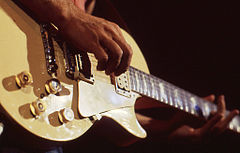The pros of each guitar picking style are indirectly correlated to the cons of the other.
Fingerstyle advantages
Edit

Fingerstyle guitar
A pick isn’t necessary.
It is easier to play non-adjacent strings at the same time.
It is easier to play
polyphonically, with separate musical lines, or separate
melody,
harmony and
bass.
It is easy to play
arpeggios.
A simpler motion is required to play notes on non-adjacent strings.
It is possible to play chords with no
arpeggiation.
There is less need to use the fretting hand to damp notes in chords, since the guitarist can pluck just the required strings.
A great variation in strokes is possible, accommodating expressiveness in
timbre.
A wide variety of strums and
rasgueadosare possible.
Fingerstyle is useful in almost any
genre.
Fingerstyle players use up to four (rarely five) surfaces to strike string independently. However, that does not equate to four plectrums, since plectrums can more easily strike strings on both up and downstrokes—which is much more difficult for fingers.
[1]
Advantages of plectrum picking
Edit

Various guitar picks.
Fingernails require no maintenance.
It involves less multi-tasking.
Picking back and forth with a pick is easier.
Alternate picking is usually the most efficient technique.
Tremolo effects may be easier to achieve.
The guitarist picks the string with less contact that a finger would involve.
A pick can be louder compared to bare finger playing.
It may be easier to maintain articulation or clarity when playing fast.
Playing on heavier gauge strings can damage un-coated nails: fingerstyle is more suited to nylon strings or lighter gauge steel strings (this does not apply to fingerpicks).

